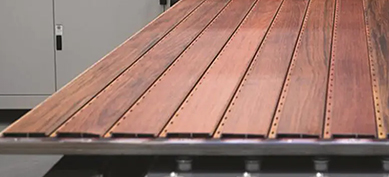The evolution of building materials is a continuous process driven by the pursuit of improved aesthetics, functionality, and efficiency. In the realm of exterior and interior cladding, one product category has steadily gained significant traction for its ability to merge the timeless appeal of natural stone with the advantages of modern manufacturing. The artificial stone wall panel represents a sophisticated solution that addresses many of the challenges associated with traditional masonry.
Understanding the Composition and Manufacturing Process
An artificial stone wall panel is a manufactured product designed to replicate the appearance of natural stone, brick, or other masonry patterns. Unlike a single piece of sculpted stone, these panels are typically composed of a blend of materials that are molded and cured to create lightweight, durable slabs. The core composition often includes high-quality aggregates, such as crushed natural stone or quartz, combined with polymer resins and cementitious binders. This mixture is infused with pigments to achieve a wide spectrum of authentic, consistent colors and realistic veining.
The manufacturing process is a key factor in the quality of the final product. Through advanced techniques like vibration compression and vacuum mixing, air pockets are eliminated, resulting in a dense, non-porous surface. The wet mixture is poured into meticulously crafted molds taken from actual stone surfaces, capturing every minute detail and texture. Once set, the panels are cured under controlled conditions to achieve their full structural integrity. The result is a product that offers remarkable visual fidelity to natural stone but with vastly improved consistency and physical properties. This controlled production ensures that each artificial stone wall panel in a batch is uniform, simplifying installation and creating a cohesive final look.
Key Advantages Over Traditional Natural Stone
The adoption of artificial stone wall panels is largely due to a compelling set of advantages they hold over their natural counterparts. These benefits span logistical, financial, and practical aspects of construction projects.
One of the most significant benefits is the remarkably low weight of these panels. Compared to full-thickness natural stone, an artificial stone wall panel can be up to 75% lighter. This characteristic dramatically reduces the structural load on a building’s framework, which is a critical consideration for high-rise construction and retrofitting projects. It also simplifies the engineering requirements and can lead to cost savings in the building’s superstructure.
The installation process for artificial panels is designed for efficiency and speed. Traditional stone cladding is a labor-intensive craft requiring skilled masons to individually set each stone. In contrast, artificial panels are designed for a direct-applied or panelized system. They come in larger, modular sections—often several square feet in size—that can be quickly adhered to a prepared substrate using specialized mortars or mechanical fasteners. This system drastically reduces installation time and labor costs, making projects more predictable and faster to complete.
From a performance perspective, artificial stone wall panels offer enhanced durability and consistency. They are engineered to be highly resistant to weathering, fading from UV exposure, and impact. Their low water absorption rate makes them highly resistant to freeze-thaw cycles, preventing cracking and spalling in cold climates. Furthermore, unlike natural stone, which can vary in color and texture from one shipment to the next, artificial panels provide absolute consistency, ensuring that the aesthetic vision remains uninterrupted even if additional materials are needed years later.
Finally, the cost-effectiveness of these panels is a major driving factor. While high-end artificial products can be comparable in price to some natural stones, they generally offer a more affordable solution overall. When the reduced costs for transportation (due to lighter weight), structural support, and installation labor are factored in, the total project savings become substantial.
Diverse Applications in Exterior and Interior Design
The versatility of the artificial stone wall panel is one of its greatest strengths, allowing it to be used in a multitude of settings beyond its primary function as an exterior cladding.
In exterior applications, they are commonly used to clad entire building facades, create striking feature walls, and adorn entranceways and columns. Their weather-resistant properties make them ideal for these purposes. They are also frequently employed in landscaping projects for building garden walls, retaining walls, and to accent outdoor living spaces like patios and kitchen areas, seamlessly blending the architecture with the natural environment.
Internally, the use of an artificial stone wall panel has become a popular design choice. Their lightweight nature makes them suitable for installation on interior partition walls where heavy natural stone would be impractical. A common application is to create a feature wall behind a fireplace, in a living room, or in a master bedroom, adding texture and a sense of organic warmth to the space. They are also used to accentuate kitchen backsplashes, hallway walls, and even in commercial settings such as restaurant interiors, hotel lobbies, and retail stores to evoke a specific ambiance. The ability to achieve a high-end, custom look without the associated weight and cost challenges has broadened the creative possibilities for architects and interior designers.
Important Considerations for Selection and Installation
While the benefits are numerous, achieving a successful outcome with an artificial stone wall panel requires careful attention to selection and installation protocols.
Selecting the right product is paramount. Quality can vary significantly between manufacturers. It is essential to choose panels that have a realistic texture and color depth; cheaper options can appear flat and plastic-like. Critical specifications to review include the panel’s compressive strength, water absorption rate, and fire rating to ensure they meet the project’s performance and safety requirements. Most reputable manufacturers provide samples, which should be evaluated in the actual lighting conditions of the intended installation space to judge their true appearance.
Proper installation is non-negotiable for long-term performance. Despite being simpler than traditional masonry, installation is not a DIY task for amateurs. It requires a skilled installer familiar with the specific system. The substrate—whether it be plywood, concrete, or cement board—must be properly prepared, structurally sound, flat, and clean. The use of the correct type of adhesive mortar, as specified by the panel manufacturer, is crucial. Incorrect adhesive can lead to bond failure and panel detachment.
Furthermore, attention to details like expansion joints, proper flashing, and weep holes (in exterior applications) is essential to manage moisture drainage and accommodate thermal expansion and contraction. Neglecting these critical steps can lead to water infiltration behind the cladding, potentially causing damage to the building envelope.
Maintenance and Long-Term Sustainability
A well-installed artificial stone wall panel requires minimal maintenance, which contributes to its life-cycle value. The non-porous surface resists staining and does not require sealing, unlike many natural stones. Routine cleaning typically involves only occasional rinsing with water or gentle washing with a mild detergent and a soft brush to remove dirt or pollutants.
From a sustainability perspective, the impact of these panels is multifaceted. On one hand, their production consumes energy and utilizes petroleum-based polymers. However, they offer several environmental advantages. The manufacturing process generates less quarry waste compared to mining natural stone. Their lightweight properties contribute to a lower carbon footprint during transportation. Furthermore, their exceptional durability and longevity mean facades will not need to be replaced for decades, reducing material consumption over time. The energy efficiency of a building can also be improved when these panels are installed over continuous insulation, creating a high-performance building envelope.
Conclusion: A Defining Material in Modern Construction
The artificial stone wall panel has firmly established itself as a legitimate and highly effective building material. It is not merely an imitation but an evolution, solving practical problems that have long plagued the use of natural stone in construction. By offering a compelling combination of aesthetic authenticity, lightweight properties, installation efficiency, and long-term durability, it provides a pragmatic and attractive solution for a wide range of projects.
As manufacturing technologies continue to advance, the visual and textural fidelity of these panels will only improve, further blurring the line between natural and artificial. For architects, builders, and homeowners alike, the artificial stone wall panel represents a tool that unlocks design potential without compromising on performance or budget. It is a clear example of how innovation in material science can enhance the built environment, making sophisticated architectural aesthetics more accessible, sustainable, and practical for the future.

 English
English Español
Español



